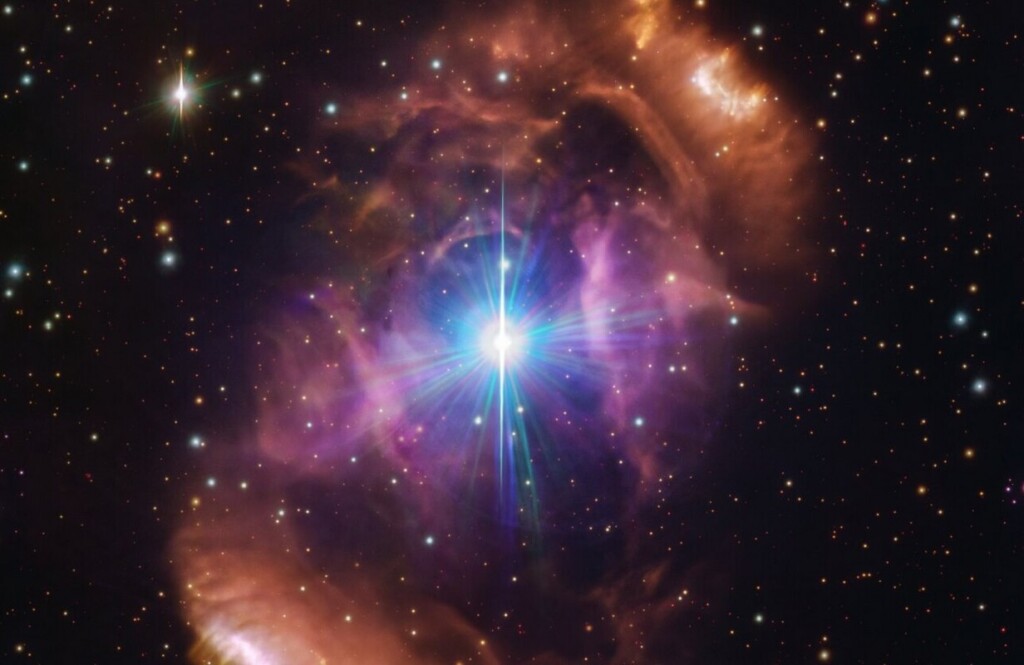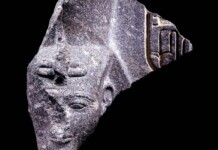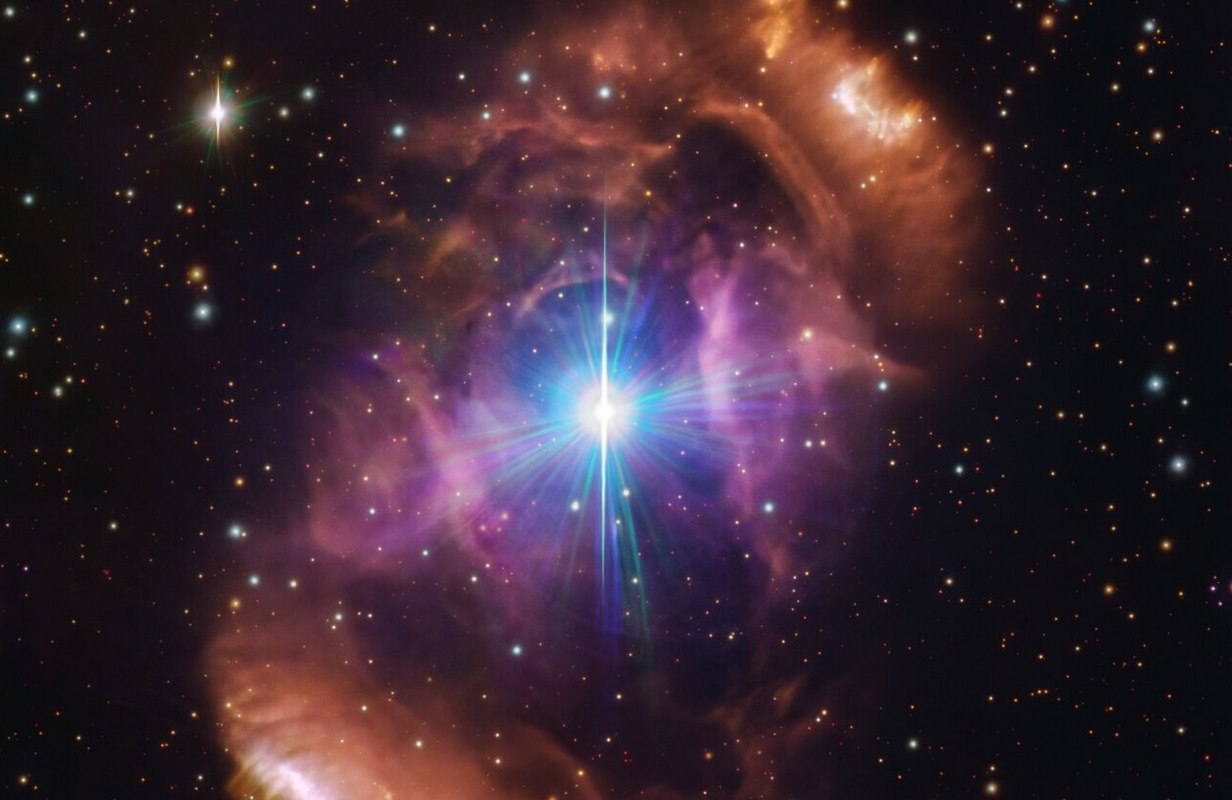
Astronomers studying the origins of a strange and mysterious nebula deduced a turbulent history that shows how massive stars can become magnetized that otherwise wouldn’t be.
As well as showing this, they were able to capture a beautiful image of what is called the ‘Dragon’s Egg’ nebula in the constellation Norma.
Researchers at the European Southern Observatory in Chile’s Atacama Desert were focusing their attention on a binary star system called HD 148937, wherein one star was small and old, and the other star was massive, magnetic, and younger.
Abigail Frost, an astronomer at ESO in Chile and lead author of the study that eventually revealed the stars’ creation story, told Physics.org that one would expect a binary star pairing to be the same age, and certainly not asymmetrically magnetic.
Massive stars are almost never magnetized, unlike our own Sun which is relatively small. Adding to the enigma of HD 148937, a beautiful nebula surrounded the pair rich in hydrogen, nitrogen, and helium—compounds that one would expect to find inside a star, not outside.
“A nebula surrounding two massive stars is a rarity, and it really made us feel like something cool had to have happened in this system,” Frost said. “When looking at the data, the coolness only increased.”
As well as deepening the mystery, the nebula also helped solve it. The evidence pointed to the scenario in which HD 148937 was a trinary star system that saw two stars close enough together to eventually collide and merge, blasting out material that formed the nebula.
ALSO CHECK OUT: NASA Turns Light into Sound Frequency Creating a Milky Way Symphony (LISTEN)
The 1.5 million year age difference between the smaller, non-magnetic star, and the larger magnetic star, was due to the larger one restoring a bit of its volatile youthfulness having merged with the third star.
“Magnetism in massive stars isn’t expected to last very long compared to the lifetime of the star, so it seems we have observed this rare event very soon after it happened,” Frost adds.
MORE NEBULAE STORIES: Stunning Image of Lobster Nebula Captured by Chilean Telescope
The data to inform the hypothesis came from the PIONIER and GRAVITY instruments onboard the Very Large Telescope Interferometer in the Atacama Desert, as well as information from the archive of the FEROS instrument at ESO’s La Silla Observatory.
The Dragon’s Egg nebula is a catchy name, and its fiery origin befitting, but there isn’t likely to be any more hatching going on in this star system apart from Frost’s new theory on the formation of magnetism in massive stars.
SHARE This Interesting Story On The Birth Of A Massive Magnet Star…




















